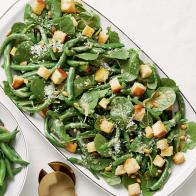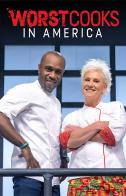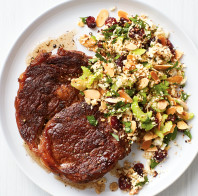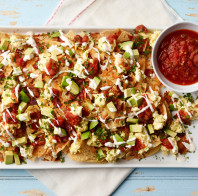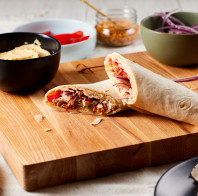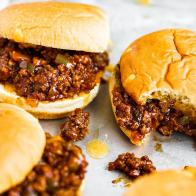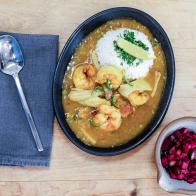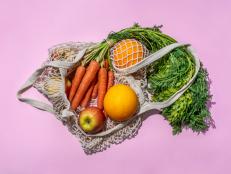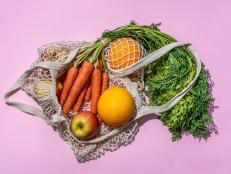7 Foods We Should Be Eating More of in 2022
Instead of buying into "superfoods," lean into foods that are convenient, nutritious and widely available.
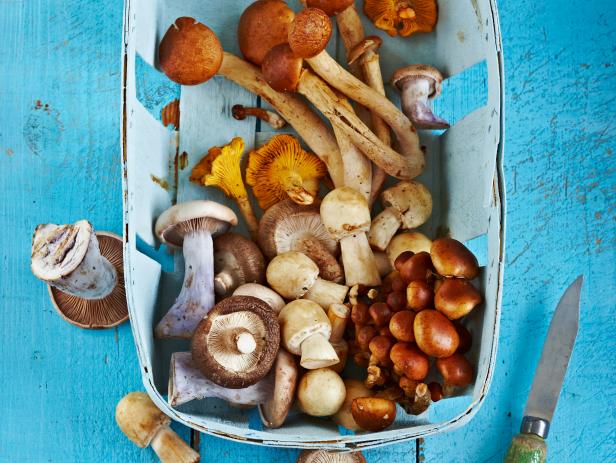
Martin Poole/Getty
If I’m being honest, I hope 2022 is the year that we finally retire the word “superfood.” As a dietitian, I feel like I spend way too much time up on a soapbox, trying to explain that no single food can drastically improve your health, happiness or quality of life. And on the flip side, no single food is evil or health-destroying, either. Eating a wide variety of foods is the best way to support your health mentally, physically, and emotionally. Obsessing over including or avoiding specific foods isn’t productive, and can actually be very disordered.
So when I asked other dietitians to suggest foods that we should be eating more of in 2022, I encouraged them to think outside the so-called “superfood” box. The foods below are fantastic for a variety of reasons: convenience, affordability, sustainability, kid-friendliness and yes, nutrition. You shouldn’t treat this list as a mandate — what you eat in 2022 is entirely up to you. But if you’re looking for foods that meet some of the criteria mentioned above to add to your regular repertoire, here are seven to consider.
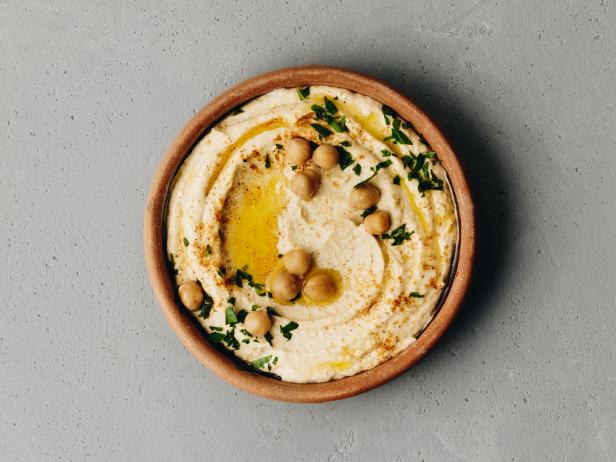
Natalia Klenova / EyeEm/Getty
Legumes in Every Form
Hummus has been trending for years, but as consumers become more conscious of sustainability and climate, plant-based foods are more popular than ever. While there are a growing number of faux meat options available, legumes like chickpeas, black beans, soybeans, lentils and peanuts remain the most affordable plant-based proteins.
“Aside from being ultra affordable, accessible, and eco-friendly, [chickpeas are] packed with nutrients and so versatile,” says Chelsea Jackle, MFN, RDN, a dietitian and food blogger. “Toss them in salads, try them as a roasted crunchy snack or add them to soup for some added fiber, protein, vitamins and minerals.” The same goes for black beans, lentils and other legumes.
It’s also easy to turn them into a dip with a food processor, some oil and some flavor add-ons like tahini or spices. “A tried-an- true staple in my kitchen is hummus,” says Christa Brown, MS, RDN a New Jersey-based dietitian. “This legume-based spread can be used as a dip or a substitute for mayo based salads such as tuna. All perfect options if you have kiddos who are allergic to a myriad of items and love dipping their veggies in something yummy and creamy.”
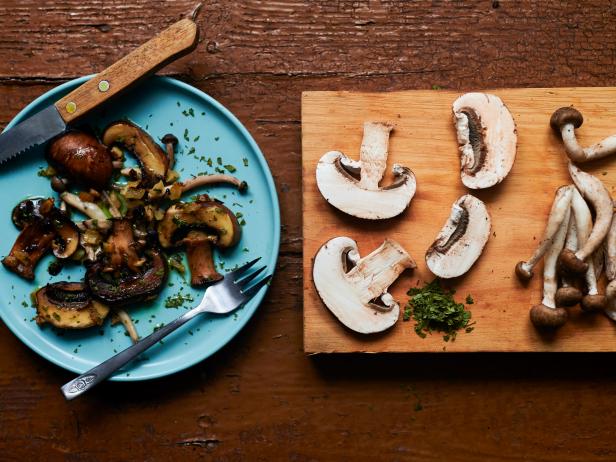
F.J. Jimenez/Getty
UV-Treated Mushrooms
No, vitamin D won’t cure or prevent COVID-19. But it’s still an important nutrient that supports bone health, muscle and immune function and glucose metabolism. We create some vitamin D when UV rays from the sun hit our skin, but we also need it from food. Unless you take cod liver oil every day, it’s unlikely you’re getting much from your diet, as there aren’t many foods that are naturally high in vitamin D.
That’s why it’s so cool that some mushroom producers have begun to expose their mushrooms to UV light before packaging, which drastically increases their vitamin D content — just half a cup of UV-treated mushrooms delivers half of your daily requirement, according to the National Institutes of Health. When you’re at the grocery store, look for packaged mushrooms that have been treated with UV light (they’ll be labeled as such). They taste exactly the same as other mushrooms and can be used interchangeably.
Plus, you can use them to scale back on your meat consumption. “Mushrooms are a budget-friendly way to add more plant-based foods to the diet and also a great substitute for meat in some recipes because they are similar in texture,” says Brynn McDowell, RD, owner of The Domestic Dietitian. “I love using finely chopped mushrooms in burgers to replace some of the ground beef, and my family can't even tell the difference.”
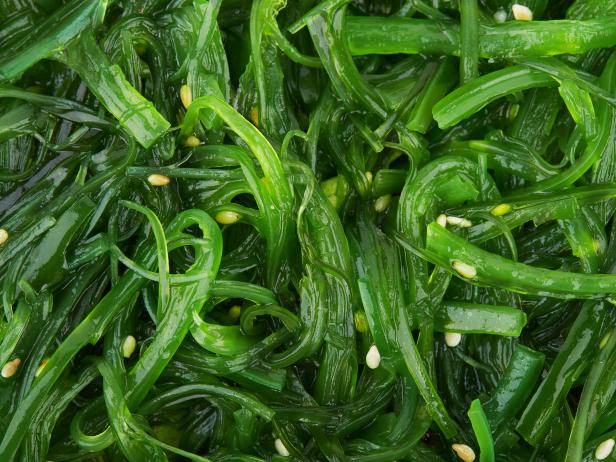
Yevgen Romanenko/Getty
Seaweed and Kelp
Sea greens are staples in many cultures, but they’ve never really had a starring role in American cuisine. That’s slowly been changing, particularly as people learn more about how sustainable and climate-friendly kelp and other types of seaweed are.
Like other green vegetables, they’re also packed with important vitamins and minerals. If you haven’t yet started eating seaweed outside of the occasional sushi dinner, 2022 is definitely the time to start.
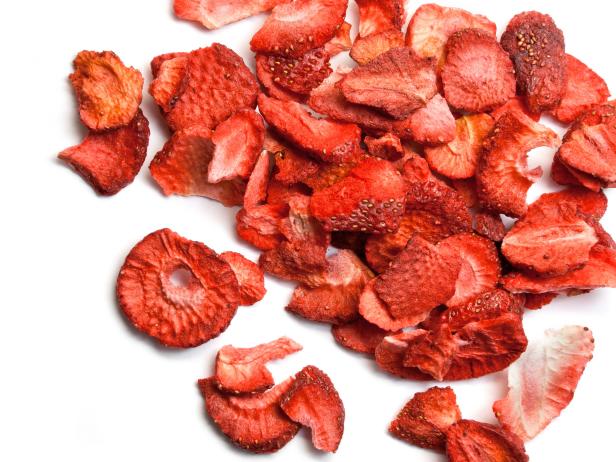
Fydorov/Getty
Canned, Frozen and Freeze-Dried Fruit
Many of us have an expanded appreciation for frozen and shelf-stable foods after two years of cycling through various forms of lockdowns, stay-at-home orders and self-quarantines. Culturally, we’re also moving away from the (false) belief that fresh is always best.
That’s all good news, because dietitians recommend taking advantage of canned, frozen and freeze-dried fruit in 2022. “Canned fruit is shelf-stable, loaded with nutrients and very digestible for those with sensitive guts,” says Abby Chan, MS, RD, a dietitian and co-owner of Evolve Flagstaff.
Frozen fruits are good for more than just smoothies. “Frozen [fruits] are not only less expensive than their fresh counterparts, but they are just as nutritious and more convenient,” says Jasmine Tom, MS, RDN. You can toss them in yogurt, stir them into oatmeal as it cooks, serve them over ice cream, or even bite right into them as a fun frozen snack.
And freeze-dried fruits are a great kid-friendly snack. “Freeze-dried fruits, like strawberries, are a shelf-stable fruit option and a nutrient-rich snack option for busy kids (plus a mess-free choice for on-the-go schedules),” says Emily Schiller, RD, a plant-forward and family-focused registered dietitian nutritionist. They’re often sold at convenience stores and dollar stores where fresh fruit may not be an option, which is another big plus.
Meatless “Chicken”
In their 2022 food trends report, the New York Times mentioned that meat grown in labs from animal cells may be federally approved in 2022, and chicken will likely be the first lab-grown meat available. While that sounds interesting, it seems that people more excited about the recent expansion of plant-based chicken options.
Chick’n nuggets are nothing new, but they’re newly everywhere. KFC is rolling out its meatless chicken nuggets (made by Beyond Meat) nationwide on January 10. Burger King just launched vegan nuggets (made by The Vegetarian Butcher) in the UK, according to VegNews. While these meatless options are nutritionally similar to their chicken-based counterparts, they’re more sustainable and eco-friendly.
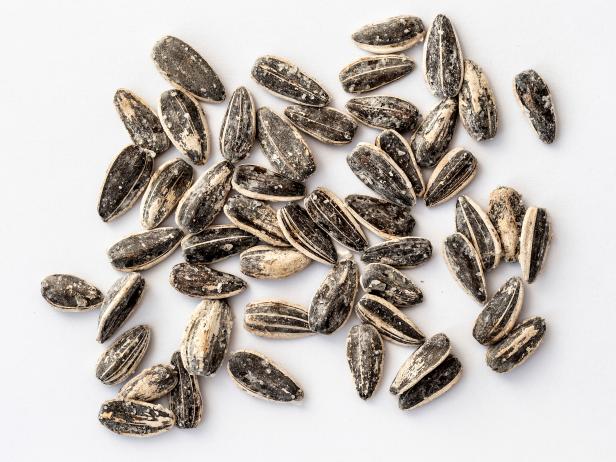
Jose A. Bernat Bacete/Getty
Seeds
Nuts get a lot of attention as a nutritious, filling and convenient snack option or meal add-on. In 2022, try adding seeds to the mix as well. “Seeds are a great on-the-go snack for the whole family,” says Nicole Stefanow, MS, RD, a culinary dietitian in the greater New York City area.
They’re packed with protein, unsaturated fat, fiber and several key vitamins and minerals. And, they’re a good nut alternative for those with allergies. “Seeds are a great allergy-friendly alternative to nuts which makes them perfect for packing school lunches or for topping salad for your next big gathering,” Stefanow says. Try snacking on roasted pumpkin seeds, adding sunflower seeds to yogurt or salads and buying sunflower seed butter instead of your usual nut butter.
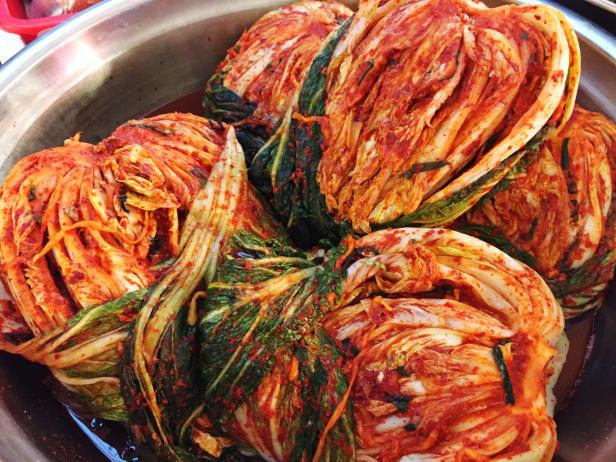
Jeff Griffin / EyeEm/Getty
DIY Fermented Foods
The wellness space is full of talk about gut health, the microbiome and probiotics. In truth, researchers have only been looking into these topics for about 10 years, and it’s too soon to make many definitive conclusions about how the bacteria in your digestive system affect your health. But one thing experts agree on is that fermented foods, not supplements, are the best way to consume probiotics and potentially improve the diversity of bacteria in your gut microbiome.
And making your own sauerkraut and kimchi just got even easier. The OOCO is a temperature-controlled pressure cooker designed to ferment foods in less time at home. It’s a fun addition to your kitchen, as well as a creative way to add more flavors to your cooking.
Related Content:


